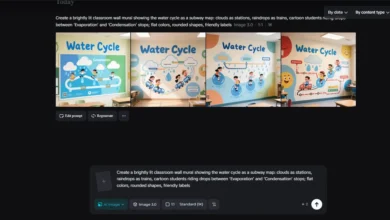
The oil and gas sector is a cornerstone of the global economy, providing the energy required for industries, transportation, and households worldwide. Major projects in this sector, including exploration, drilling, refining, and distribution, are complex and often span several years and multiple geographical regions.
Successfully navigating these projects requires meticulous planning, robust management strategies, and a keen understanding of the sector’s unique challenges and opportunities. This article outlines key strategies for successfully managing major oil and gas projects.
Comprehensive Project Planning
Effective project planning is the foundation of success in the oil and gas sector. This phase involves:
- Feasibility Studies: Conducting thorough feasibility studies to assess the project’s viability, including economic, technical, and environmental factors.
- Scope Definition: Clearly defining the project scope, objectives, and deliverables to make sure that all stakeholders have a shared understanding.
- Risk Assessment: Identifying potential risks and developing mitigation strategies. This includes environmental risks, geopolitical issues, market fluctuations, and technical challenges.
- Budgeting and Scheduling: Establishing realistic budgets and timelines, taking into account the scale and complexity of the project. Contingency plans should be included to address unexpected issues.
- Software: Dedicated project management software can provide accurate forecasting and reports during every step of the process. OCCMS, in particular, have dedicated oil and gas project management software.
Robust Project Management
Once the planning phase is complete, robust project management practices are crucial to keep the project on track. Key elements include:
- Project Management Office (PMO): Establishing a PMO to oversee the project, ensuring adherence to plans and facilitating communication among stakeholders.
- Agile Methodologies: Implementing agile project management techniques can help in adapting to changes and addressing issues promptly.
- Resource Management: Efficiently managing resources, including personnel, equipment, and materials, to avoid delays and cost overruns.
- Technology Integration: Utilizing advanced project management software and technologies to track progress, manage resources, and facilitate communication.
Stakeholder Engagement
Effective stakeholder engagement is essential for the smooth execution of major projects. This involves:
- A Communication Plan: Developing a comprehensive communication plan to keep all stakeholders informed and engaged. This includes regular updates, meetings, and transparent reporting.
- Community Relations: Engaging with local communities to address concerns and ensure the project benefits the region. This can include job creation, infrastructure development, and environmental protection measures.
- Regulatory Compliance: Maintaining compliance with local, national, and international regulations to avoid legal issues and project delays.
Environmental and Safety Considerations
The oil and gas sector faces significant scrutiny regarding environmental and safety standards. To address these concerns:
- Environmental Impact Assessments (EIA): Conducting EIAs to understand and mitigate the environmental impact of the project.
- Sustainable Practices: Implementing sustainable practices to minimize environmental damage, such as reducing emissions, managing waste, and protecting biodiversity.
- Safety Protocols: Establishing stringent safety protocols to protect workers and the environment. This includes regular training, safety audits, and emergency response plans.
Technological Innovation
Leveraging technological advancements can enhance efficiency and reduce costs. Key innovations include:
- Automation and AI: Utilizing automation and artificial intelligence to optimize operations, improve accuracy, and reduce human error.
- Big Data and Analytics: Employing big data analytics to make informed decisions, predict trends, and optimize production.
- Remote Monitoring: Implementing remote monitoring technologies to oversee operations in real time, ensuring a quick response to issues and improving safety.
Financial Management
Effective financial management ensures that the project remains economically viable throughout its lifecycle. This includes:
- Cost Control: Implementing cost control measures to monitor and manage expenses, preventing budget overruns.
- Funding and Investment: Securing adequate funding and investment through strategic partnerships, loans, or equity financing.
- Economic Forecasting: Regularly forecasting economic conditions to adjust strategies and maintain financial stability.
Talent Management
Attracting and retaining skilled professionals is crucial for project success. This involves:
- Recruitment Strategies: Developing targeted recruitment strategies to attract top talent.
- Training and Development: Providing continuous training and development opportunities to enhance skills and knowledge.
- Employee Retention: Implementing policies and benefits to retain skilled workers, such as competitive salaries, career advancement opportunities, and a positive work environment.
Conclusion
Navigating major projects in the oil and gas sector requires a multifaceted approach that encompasses thorough planning, robust project management, effective stakeholder engagement, stringent environmental and safety standards, technological innovation, sound financial management, and strategic talent management.
By integrating these strategies, project managers can overcome the complex challenges inherent in the oil and gas industry and ensure the successful completion of major projects. This not only contributes to the profitability and sustainability of the sector but also supports the broader goal of providing reliable energy to meet global demands.

















